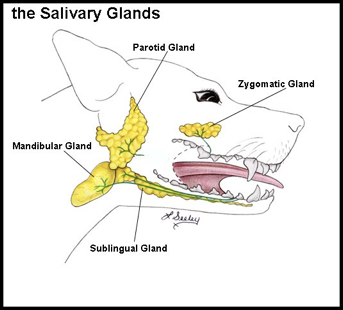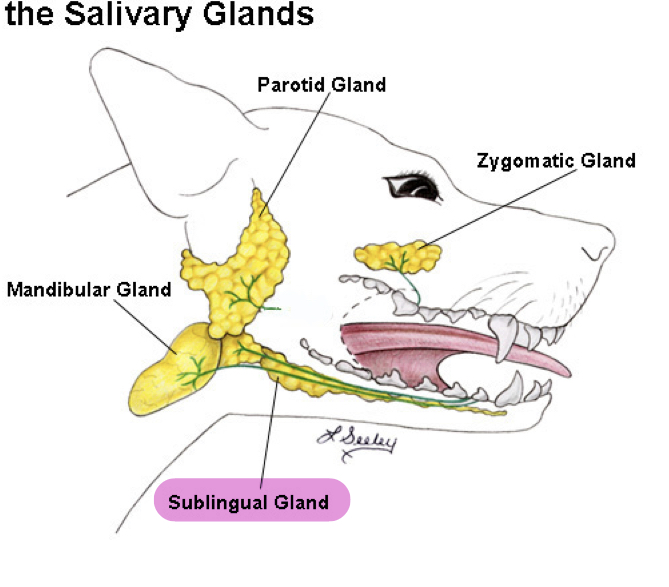Salivary Glands
1/6
There's no tags or description
Looks like no tags are added yet.
Name | Mastery | Learn | Test | Matching | Spaced |
|---|
No study sessions yet.
7 Terms
What are the 4 salivary glands?
Parotid
Mandibular
Sublingual
Zygotmatic
Salivary Glands
Aids in
Acts as
Contains which enzyme
Function
Present in
Absent in
Aids in: Formation of bolus
Acts as: Lubricant during swallowing
Contains which enzyme: Amylase
Function: Hydrolysis and digest of starch
Present in: Pigs
Absent in: Ruminants and dog/cats
Parotid Gland
Color
Location
Dorsally
Ventrally
Medially
In horse makes contact with
Duct opens where
Color: Lighter red
Location: Fills retromandibular fossa
Dorsally: Base of ear
Ventrally: Extend into neck and intermandibular space
Medially:
Common carotid artery
External jugular vein
Hyoid bones and its muscles
Branches of facial and trigeminal nerves
Lymph nodes
In horse makes contact with: Guttural pouch
Duct opens on: Buccal vestibule

Shape of Parotid Gland in Different Species
Carnivores
Pig
Ruminent
Horse
Carnivores: Small and triangular
Pig: Large and triangular
Ruminant: Club shaped
Horse: Large and fills retromandibular fossa

Mandibular Gland
Location
Partly covered by
Shape and number compared to parotid in
Dog
Pig
In ruminants
In horse
Duct open on
Location: Between basihyoid and wing of atlas
Partly covered by: Parotid gland
Shape and number compared to parotid in
Dog: Oval, more than parotid
Pig: Oval, less than parotid
In ruminants: Larger and extend from wing of atlas into intermandibular space
In horse: Less than parotid, long and narrow
Duct open on: Floor of oral cavity

Sublingual Glands
Number
Location
Number: 2
Location: Under mucosa of lateral sublingual recess and lateral surface of tongue

Zygomatic Gland
In dog called
Location
Duct open into
In dog called: Dorsal buccal gland
Location: Medial to zygomatic arch
Duct open into: Buccal vestibule
